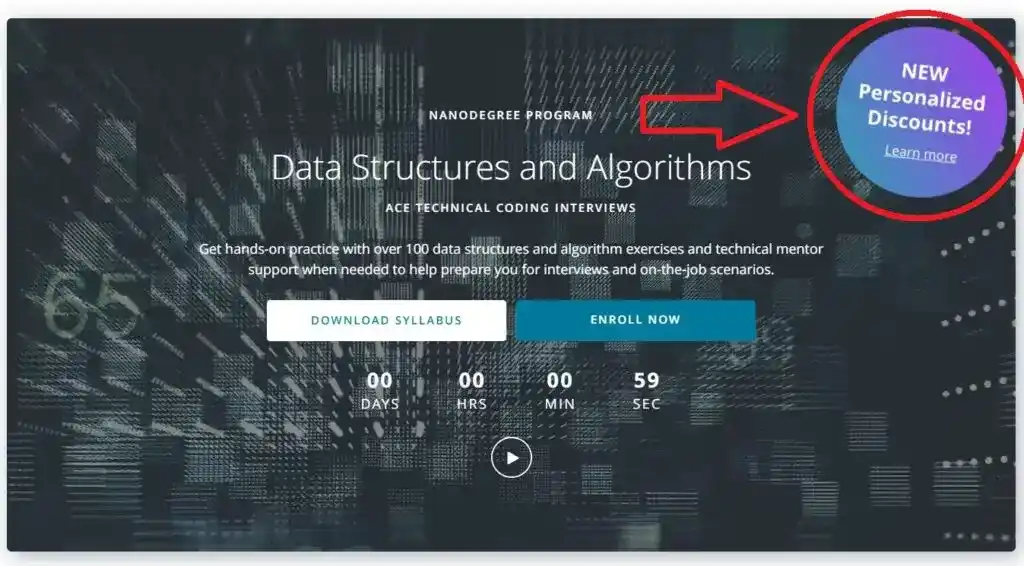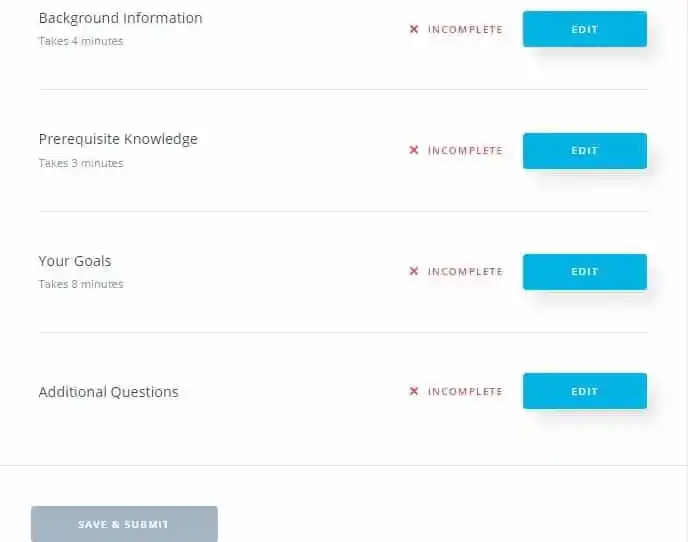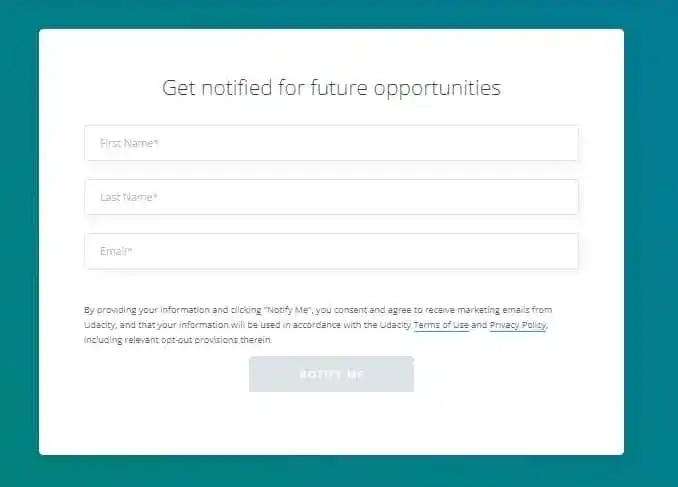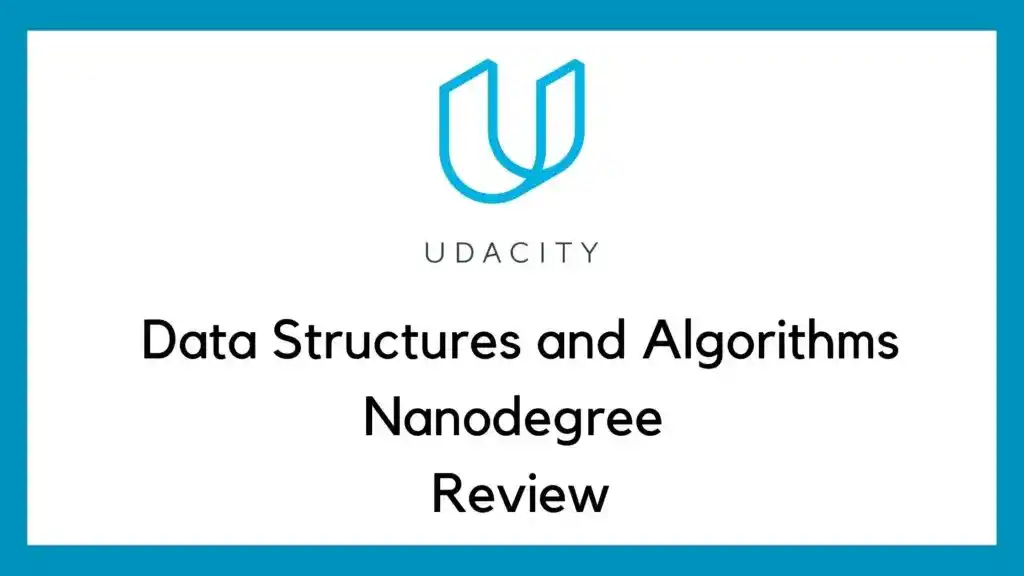Do you want to learn Data Structures and Algorithms and planning to enroll in Udacity Data Structures and Algorithms Nanodegree?… If yes, read this Udacity Data Structures and Algorithms Nanodegree Review and then decide whether to enroll in the program or not.
Now, without further ado, let’s start the Udacity Data Structures and Algorithms Nanodegree Review.
Udacity Data Structures and Algorithms Nanodegree Review
- Udacity Data Structures and Algorithms Nanodegree Price and Duration
- How to Get Udacity Data Structures and Algorithms Nanodegree at Low Cost?
- Who Should Enroll in Udacity Data Structures and Algorithms Nanodegree?
- Udacity Data Structures and Algorithms Nanodegree Syllabus and Projects
- Instructors of Udacity Data Structures and Algorithms Nanodegree
- Is Udacity Data Structures and Algorithms Nanodegree Worth It?
- Conclusion
I consider any course or program worth it on some parameters. So, in this Udacity Data Structures and Algorithms Nanodegree Review, I will review the Nanodegree program on some parameters. And based on these parameters, I will tell you whether this Udacity Data Structures and Algorithms Nanodegree is worth it for you or not.
So, the first parameter is Price. Let’s see whether Udacity Data Structures and Algorithms Nanodegree is worth the money or not.
Udacity Data Structures and Algorithms Nanodegree Price and Duration
According to Udacity, the Udacity Data Structures and Algorithms Nanodegree program will take 4 months to complete if you spend 10 hours per week. And for 4 months they cost around $1199. But Udacity offers two options- One is either pay the complete amount upfront or you can pay monthly installments of $399/month.
I know Udacity Data Structures and Algorithms Nanodegree is expensive as compared to other MOOCs.
I believe that Udacity Data Structures and Algorithms Nanodegree is not worth it if you pay the full money. Because there are various courses available at low cost, but, If you get the Udacity Data Structures and Algorithms Nanodegree at low cost by saving a few bucks, then you can enroll in Udacity Data Structures and Algorithms Nanodegree.
Do you want to know what are these tricks to get Udacity Data Structures and Algorithms Nanodegree at a low cost?
So, let’s see the three methods which you can use to get Udacity Data Structures and Algorithms Nanodegree at a low cost.
How to Get Udacity Data Structures and Algorithms Nanodegree at Low Cost?
These 3 methods are-
- Get Some Discounts
- Complete the whole Nanodegree in less time.
- Apply for Udacity Scholarship
1. Get Some Discounts
Most of the time, Udacity offers some discounts. When they offer a discount, it appears something like that-

You need to apply the coupon provided by Udacity at the time of checkout. And you will get a discount on the Udacity Data Structures and Algorithms Nanodegree program. So to get a discount on Udacity, you need to wait for their sale.
You can check the current Discount of Udacity Data Structures and Algorithms Nanodegree-> Here.
2. Complete the whole Nanodegree in less time
To complete the Udacity Data Structures and Algorithms Nanodegree program in less time, you need to manage your time productively.
You need to plan your day before and create a to-do list for each day. And you need to spend a good amount of time daily on the program.
According to Udacity, you need to spend 10 hours per week to complete the whole program in 4 months.
Right…?
That means, daily you need to spend 1.5 hours, but if you double the time and give daily 3 hours, then you can complete the whole Nanodegree program in 2 months.
For managing your time and avoiding any distractions, you can use the Pomodoro technique to increase your learning.
And you can also implement the project phases after watching the related lecture. By doing this way, you can save your time by watching one video two times. One at the time of learning and the second at the time of working on the project.
I hope these tips will help you to complete the Udacity Data Structures and Algorithms Nanodegree in less time. And you can save two months’ fees.
3. Apply for Udacity Scholarship
To apply for Udacity Scholarship, you need to go on their Scholarship page, which looks like something like that-

On this page, you have to find the scholarship for the program you want to enroll. If you found your Nanodegree program on the list, then you need to apply for the scholarship by filling out these details-
- Background Information
- Prerequisite Knowledge
- Your Goals
- Additional Questions

In the background information section, they will ask about your Country, Age, Gender, ethnicity, the highest level of education, current job role, years of professional experience, and how many hours can you dedicate to the program per week?
The prerequisite Knowledge section varies depending on the Nanodegree program you are applying for.
In the Goals section, you have to tell your primary purpose in participating in this scholarship program, what do you hope to accomplish through this program?, and Why should you receive a scholarship?.
In the last section which is Additional Questions, you have to agree to their terms and conditions.
You should fill the Goals section very carefully so that you increase your chance of getting a scholarship.
After filling out these details, you need to click on the “Save and Submit“ button. And by doing so, you have applied for Udacity Scholarship. And if you are selected, then you will be notified via email.
But if your program is not listed in the scholarship section, then you fill out this form on the Scholarship page section-

So, whenever the scholarship will available, you will be notified. I hope now you understood the procedure.
If you follow any of these three methods, you can save a few bucks.
If you get Udacity Data Structures and Algorithms Nanodegree at low cost by following these methods, then I would say it is worth it.
The next Parameter is whether you have the required knowledge for this Udacity Data Structures and Algorithms Nanodegree or not. I mean the prerequisites for the Nanodegree Program.
Because without having prerequisite knowledge, you will feel lost in the Udacity Data Structures and Algorithms Nanodegree program. And you may think that you have wasted your money with the wrong program. That’s why this is the important parameter I always consider before selecting any course.
Who Should Enroll in Udacity Data Structures and Algorithms Nanodegree?
If you have enough Python Programming knowledge, then only you should enroll in this Udacity Data Structures and Algorithms Nanodegree.
If you are a beginner with no programming knowledge, I would not suggest this Udacity Data Structures and Algorithms Nanodegree. In this case, first, learn Python Programming from any YouTube videos or online courses.
So, based on my experience, Udacity Data Structures and Algorithms Nanodegree Program is not worth it for Beginners with no Python knowledge.
My next parameter is the Quality of the Content and the Projects Covered. So, let’s see the content and projects covered in the Udacity Data Structures and Algorithms Nanodegree.
Udacity Data Structures and Algorithms Nanodegree Syllabus and Projects
Data Structure and Algorithms is all about implementation and practice. Right…?
So, if any course covers only theory, I believe this is the waste of time. Udacity Data Structures and Algorithms Nanodegree focuses on the practical side.
After every set of courses, there is a project that you need to submit. Due to its practical approach, you will get to learn various new things. Because when you implement it by yourself, your understanding becomes stronger.
In Udacity Data Structures and Algorithms Nanodegree, there are 4 courses and 4 projects. Along with that, you will practice more than 100 data structure and algorithms problems.
Now, let’s see what topics each course will cover.
Course 1- Basic Introduction
This course is a kind of Python Refresher. In this course, you will revise your Python basics and learn how to solve problems. The instructor will also discuss various tools to evaluate different data structures & algorithms.
You will also learn Big O Notation and understand the order of increase between the input size and runtime of an algorithm in this course.
After completing this course, there will be one project, which you need to submit.
Project 1- Unscramble Computer Science Problems
This is a very basic project where you have to deconstruct a series of open-ended problems into smaller components. For example inputs, outputs, series of functions, etc.
This project is a great learning experience for you if you are just starting to learn data structures and algorithms and test your basics.
When you complete this project, the reviewer will review your code and give feedback. The feedback and the peer community will help you throughout the program to clear your doubts.
After submitting this project, you can move forward toward the second course of the Udacity Data Structures and Algorithms Nanodegree.
Course 2- Data Structures
This course will cover Data Structure Basics. In this course, you will learn how to implement different methods used to manipulate the data structures and examine their efficiency.
Collection data structures (lists, arrays, linked lists, queues, stack), Recursion, Trees, Maps, and Hashing are discussed in this course.
You will also learn how to approach open-ended problems (either in interviews or in real-world scenarios) and select appropriate data structures based on requirements.
After completing this course, there is another project which you have to submit.
Project 2- Show Me the Data Structures
In this project, you will solve a series of open-ended practice problems such as LRU Cache, Private Blockchain, File Recursion, and many more.
This project will help you to hone your skills to identify and implement appropriate data structures and corresponding methods which meet given constraints.
Throughout the project, you can clear your doubts with the mentor. They will guide you and review your project code.
Course 3- Basic Algorithms
This course will cover basic algorithms such as searching and sorting and you will learn how to implement them on different data structures and examine the efficiency of these algorithms.
Throughout this course, you will practice various interview problems to select and modify these algorithms.
You will use recursion to implement these algorithms and then learn how some of these algorithms can be implemented without recursion.
At the end of this course, you have to work on a project to test your understanding.
Project 3- Problems vs. Algorithms
In this project, you will work on a series of real-world open-ended problems such as request routing for web server, search term auto-completion, and Fibonacci heap which trains you to apply suitable data structures and algorithms under a different context.
This project will make your Data Structure and Algorithms understanding stronger. The mentor will not only tell you your mistakes but also suggest you where to improve by showing the improved code.
The last and next course is-
Course 4- Advanced Algorithms
This course covers advanced algorithms such as brute-force greedy algorithms, graph algorithms, and dynamic programming, which optimizes recursion by storing results to sub-problems.
The pace of each lesson and the thorough approach to teaching each topic are really good. Project reviews are detailed so if the project does not fully match the requirements then you can correct the project with the help of the detailed review.
When you complete this course, there will be the last project of this Udacity Data Structures and Algorithms Nanodegree.
Project 4- Route Planner
This is an advanced project where you have to build a route-planning algorithm like the one used in Google Maps to calculate the shortest path between two points on a map.
First, you have to select and implement an appropriate data structure to represent points on a map and then implement the A* algorithm to find the shortest path.
I have published two Research Papers on this Project. You can check these Research Papers for a reference.
- Novel optimization using hierarchical Path finding A* (HPA*) algorithm for strategic gaming setup
- Analysis of Multiple Shortest Path Finding Algorithm in Novel Gaming Scenario
So, there are the 4 Courses and 4 Projects for Udacity Data Structures and Algorithms Nanodegree. The best thing which I like in Udacity Data Structures and Algorithms Nanodegree is that they focus on the Practical Aspects. Because Data Structures and Algorithms are all about practice.
Some of the exercises are extremely time-consuming requiring a lot of research outside of Udacity to arrive at a solution. This especially applied to the Recursion section.
The mentor will read all your codes piece by piece, not only the result. This is the unique feature of Udacity.
The general layout of the classroom page is a little bit confusing.
But the overall quality of the course and projects is worth it. If you consider this parameter, I would suggest the Udacity Data Structures and Algorithms Nanodegree.
The next parameter, I always check is the Instructors of the course. This is an important parameter, you should not avoid this parameter. Because, if the instructors are not experienced, then how they can teach the concepts.
So, let’s see how are the instructors of the Udacity Data Structures and Algorithms Nanodegree.
Instructors of Udacity Data Structures and Algorithms Nanodegree
- Brynn Claypoole– she is working as a software engineer with 10x Genomics.
- Abe Feinberg– He is a Content Developer at Udacity and previously taught university courses in psychology and computer science.
- Kyle Stewart-Franz– He has developed projects for a variety of Udacity’s Nanodegree programs, such as Self-Driving Car Engineer, Robotics, and Blockchain. Kyle, a self-taught developer, is always striving towards creating a great learning experience for students.
I like that the instructors are experienced because learning from someone who is already in it and has experience in the field is worth it.
So, after considering all the parameters, it’s time to answer-
Is Udacity Data Structures and Algorithms Nanodegree Worth It?
Yes, the Udacity Data Structures and Algorithms Nanodegree is worth it for those who have enough Python Programming knowledge. The whole Nanodegree program is combined with various Real-World projects that will make your understanding and resume powerful. They will also provide One-to-One Mentorship to clear your doubts while working on projects.
That’s all. It’s time to wrap up this Udacity Data Structures and Algorithms Nanodegree Review–
Conclusion
I hope this Udacity Data Structures and Algorithms Nanodegree Review helped you and cleared your doubts regarding the Udacity Data Structures and Algorithms Nanodegree program. If you have any doubts or questions, feel free to ask me in the comment section.
All the Best!
Happy Learning!
You May Also Interested In
12 Best Data Visualization Courses Online- You Need to Know in 2025
Data Analyst Online Certification to Become a Successful Data Analyst
8 Best Books on Data Science with Python You Must Read in 2025
14 Best+Free Data Science with Python Courses Online- [Bestseller 2025]
10 Best Online Courses for Data Science with R Programming in 2025
Thank YOU!
Explore More about Data Science, Visit Here
Though of the Day…
‘ It’s what you learn after you know it all that counts.’
– John Wooden
Written By Aqsa Zafar
Founder of MLTUT, Machine Learning Ph.D. scholar at Dayananda Sagar University. Research on social media depression detection. Create tutorials on ML and data science for diverse applications. Passionate about sharing knowledge through website and social media.

